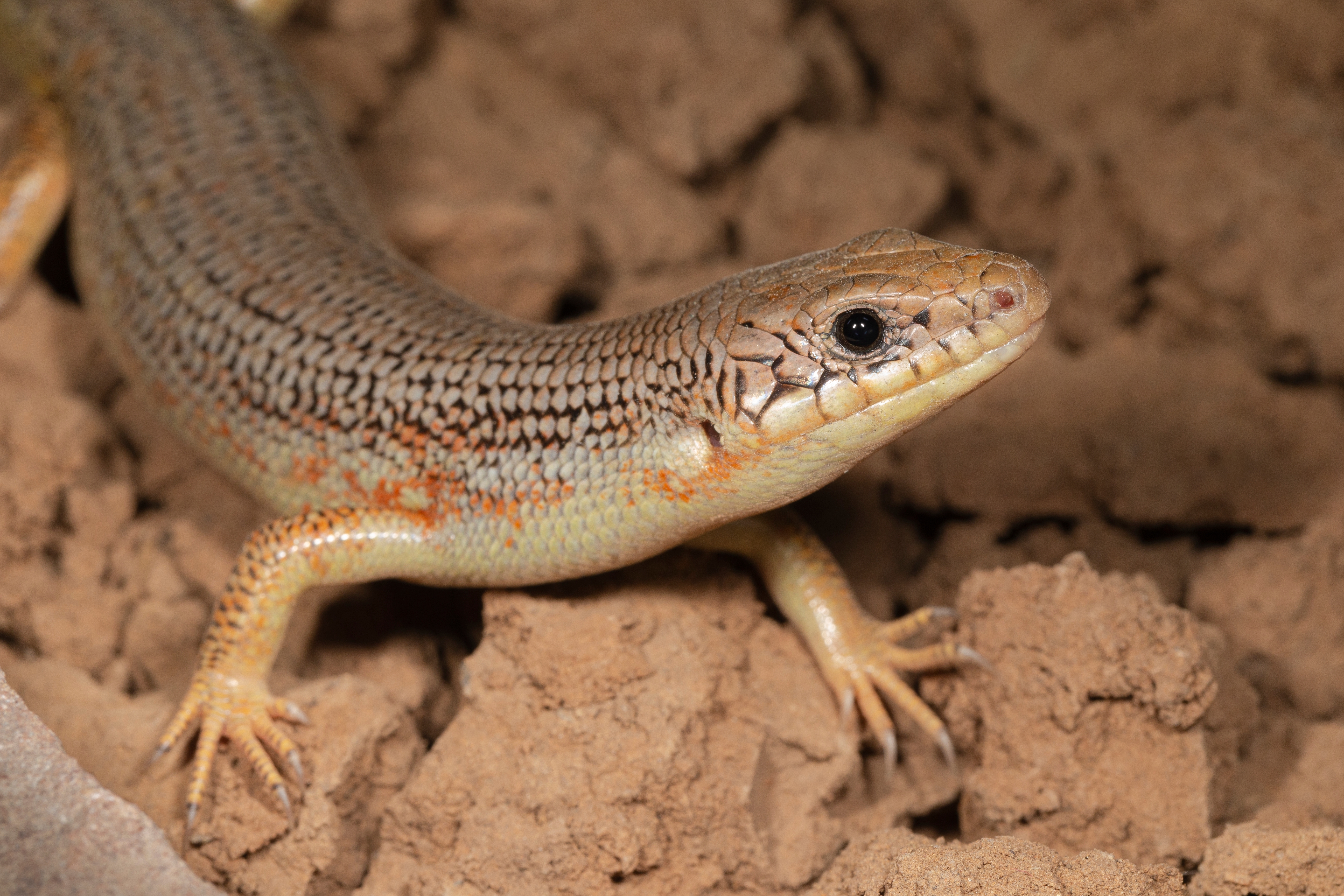Great Plains skink
(Plestiodon obsoletus)

Description
The Great Plains skink (Plestiodon obsoletus) is a species of lizard endemic to North America. The Great Plains skink, together with the broad-headed skink, is the largest skink of the genus Plestiodon. It reaches a length of 9 to 13 cm from snout to vent (SVL) or up to nearly 34 cm total length (including the tail). This lizard is light gray or beige in color; its dorsal scales have black or dark brown edges. The scales on the sides run diagonally. The belly is yellow. Juveniles are black with white sports on the lips and the head and have a blue or bluish tail. The Great Plains skink is very common on the Great Plains, ranging from southeastern Wyoming and Nebraska (and also Fremont County, Iowa) southward to eastern Arizona, New Mexico, Texas, and into Mexico. This skink lives in open plains habitat or the eastern foothills of the Rocky Mountains, in areas near water, e.g. irrigation ditches. In southeastern Colorado, it occurs in elevation up to about 1900 m (7200 ft); in northern Colorado, only at elevations below about 1400 m (4500 ft). The mating season of the Great Plains skink is in April or May. The female lays between 5 and 32 eggs (on the average about 12) in early summer, which she guards until they hatch in late summer. Plestiodon is a genus of lizards in the family Scincidae (skinks). The genus contains many species formerly classified under the genus Eumeces, except those now placed in Mesoscincus. They are secretive, agile animals with a cylindrical body covered with smooth, shiny scales. They are distributed from East Asia to throughout North America from southern Canada south to Mexico, including oceanic islands such as Bermuda. The conspicuous coloring of species of Plestiodon is a survival trait: it attracts a predator's attention to the tail of the animal, which will break off when grabbed. A skink thus often manages to escape and hide under some rock, log, or fallen leaves while the predator still contemplates the wildly thrashing severed tail. (This is an instance of what is called autotomy: voluntarily shedding a body part in order to escape, and later re generating the body part.) After the tail regenerates, it usually has the same color as the rest of the body and is typically shorter than the original tail. In some species, regrown tails are pinkish. A regrown tail has a cartilaginous rod for support instead of vertebrae.
Taxonomic tree:







